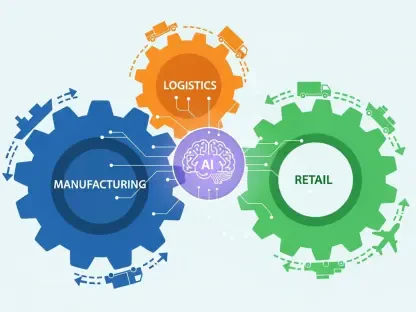In a striking development that has sent ripples through legal and technological circles, a recent ruling by a prominent Indian court has brought to light the perils of unchecked reliance on artificial intelligence in quasi-judicial proceedings, exposing critical flaws in its application by tax authorities. The case, involving a staggering tax demand of ₹27.91 crore, has raised serious questions about fairness and accountability. The court’s sharp criticism of an Assessing Officer’s use of fictitious, AI-generated case laws underscores a growing concern: technology, while a powerful ally, can become a dangerous liability without proper oversight. This landmark decision not only addresses the immediate grievances of the affected company but also sets a significant precedent for how AI should be integrated into legal and administrative processes. As digital tools become increasingly prevalent in governance, this ruling serves as a timely reminder of the need to balance innovation with integrity, ensuring that justice remains untainted by technological errors.
Unveiling Procedural Lapses in Tax Assessment
The heart of this controversy lies in a tax assessment order issued by the National Faceless Assessment Centre (NFAC) against KMG Wires Private Limited, where the company’s income was assessed at a staggering ₹27.91 crore, dwarfing its declared income of ₹3.09 crore. This massive discrepancy led to a legal challenge, as the company contested the order, a hefty demand notice, and a penalty show-cause notice on grounds of procedural irregularities. Despite submitting extensive documentation—over 100 pages of invoices, e-way bills, GST returns, and transport receipts—to substantiate its transactions, the Assessing Officer (AO) claimed no response was received. This oversight alone raised serious doubts about the diligence exercised during the assessment. Even more alarming was the AO’s reliance on three judicial precedents to justify an addition of ₹22.66 crore under Section 68 of the Income Tax Act, precedents that were later discovered to be entirely fabricated, likely generated by an AI tool without verification.
Further scrutiny revealed a profound breach of natural justice in the handling of this case, as the court took a dim view of the AO’s actions. The Bombay High Court, presided over by Justices BP Colabawalla and Amit Jamsandekar, emphasized that ignoring substantial evidence submitted by the company was unacceptable and pointed to a systemic failure in the assessment process. The fictitious case laws cited by the AO compounded the issue, illustrating how blind trust in AI outputs can distort legal reasoning and undermine fairness. Counsel for NFAC admitted to the oversight, acknowledging that the supplier’s response was overlooked and describing the referenced precedents as an untraceable “error.” Despite attempts to downplay the issue, the court rejected arguments questioning the maintainability of the writ petition, asserting that such lapses constituted a fundamental violation of procedural norms. This case has thus spotlighted the urgent need for accountability when technology intersects with justice.
AI in Quasi-Judicial Processes: A Double-Edged Sword
The court’s observations in this matter have broader implications, particularly regarding the role of artificial intelligence in quasi-judicial functions. While AI holds immense potential to streamline processes and enhance efficiency, the judges cautioned against its unverified use, especially in decisions that impact taxpayers’ rights. The reliance on fabricated case laws by the AO serves as a stark example of how technology can lead to erroneous outcomes if not cross-checked with human judgment. This incident has highlighted a critical gap in training and protocols for officials using digital tools, exposing the risk of distorted legal interpretations. The court’s message was clear: AI must be treated as an aid, not a substitute for diligent analysis, and its outputs require rigorous validation to prevent miscarriages of justice. Such warnings resonate in an era where automation is increasingly integrated into governance, urging a reevaluation of how technology is deployed in sensitive areas.
Beyond the specifics of this case, the ruling draws attention to a growing awareness of AI’s limitations within legal frameworks, advocating for a balanced approach. The judges stressed that quasi-judicial authorities must exercise caution and diligence when leveraging automated tools, ensuring that results are thoroughly vetted before influencing decisions. This perspective reflects a broader concern about the potential for systemic errors when technology is adopted without adequate safeguards. The case of KMG Wires serves as a cautionary tale, illustrating how easily AI-generated misinformation can infiltrate official proceedings if unchecked. As digital solutions become more embedded in administrative processes, the need for robust oversight mechanisms becomes paramount. The court’s critique underscores that while innovation can drive progress, it must be tempered with responsibility to protect the principles of fairness and equity in legal and tax matters.
Setting a Precedent for Fair Reassessment
In delivering its final ruling, the Bombay High Court took decisive steps to rectify the injustices faced by KMG Wires Private Limited, remanding the matter back to the Assessing Officer for a fresh review. The court issued explicit directives to ensure transparency, mandating a proper show-cause notice and a personal hearing for the company before the end of the current year. Additionally, any judicial decisions to be relied upon were to be shared with the company at least seven days in advance, and the final order was required to address all submissions in detail. These measures aimed to restore procedural fairness, addressing the lapses that had previously marred the assessment. This judicial intervention not only provided relief to the affected party but also reinforced the importance of upholding natural justice in tax proceedings, setting a benchmark for future cases involving technological tools.
Reflecting on the broader impact, the court’s decision served as a powerful reminder of the pitfalls of over-reliance on AI in quasi-judicial functions. By critiquing the AO’s disregard for substantial evidence and use of fabricated precedents, the ruling exposed systemic vulnerabilities that could have far-reaching consequences if left unaddressed. The directive for a fair reevaluation was a step toward correcting past errors, ensuring that the company’s rights were protected. More importantly, this judgment established a precedent for the responsible use of technology in legal and administrative contexts. It highlighted the necessity for quasi-judicial officers to prioritize diligence, using AI as a supportive tool rather than a definitive authority. As a result of this landmark case, future considerations must focus on developing clear guidelines and training programs to integrate technology responsibly, safeguarding justice from the risks of unchecked automation.









